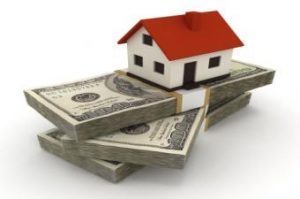 A new Zillow analysis [1] has found that affordability issues are expected to worsen by the end of the year, and are likely to leave millions newly housing cost burdened, as record low mortgage rates [2] and dampened rent growth are quickly evaporating with housing costs rising faster than incomes.
A new Zillow analysis [1] has found that affordability issues are expected to worsen by the end of the year, and are likely to leave millions newly housing cost burdened, as record low mortgage rates [2] and dampened rent growth are quickly evaporating with housing costs rising faster than incomes.
Mortgage payments as a percentage of U.S. income reached 19.4% in June—the most current observed data—and are anticipated to surpass 2018 levels in August. Assuming home values grow in line with what Zillow economists have forecast, that percentage could rise to more than 23.1% by the end 2021, depending on where mortgage rates are heading in the coming months.
"Strong demand and rising prices for homes are overwhelming the ability of low mortgage rates to keep monthly payments down," said Nicole Bachaud [3], Zillow Economic Data Analyst. "As prices continue to outpace income gains, affordability constraints will start to slow home price growth."
Fannie Mae's latest Home Purchase Sentiment Index (HPSI) [4] has found that a s lack of inventory and elevated prices continue to make the prospect of home shopping and homebuying daunting for a majority of Americans today. Pessimism toward homebuying conditions set a survey record in July, with the HPSI report, as on the buy-side, 66% of respondents felt it was a bad time to buy a home, up from 64% last month; while on the sell-side, 75% of respondents said it's a good time to sell, down slightly from 77 % last month.
Zillow reports [1] that if rates begin to exceed the 3% mark over the next few months, monthly payments for new mortgages will increase as well, and the change is more pronounced for costly houses. In the nation's most expensive markets—San Jose and San Francisco—an increase in interest rates to 3.5% by December could cost homeowners an extra $378 and $334 more per month in mortgage payments, respectively. If interest rates rise to 4%, those increases stand at $751 and $663, respectively.
Regionally, homeowners in Austin, Texas have seen monthly payments for new mortgages rising faster than income growth. As of June 2021, Austin was more affordable than eight major U.S. metros, but by December, Austin is expected to surpass Seattle, Miami, and New York, leaving only the expensive California metros of San Francisco, San Jose, San Diego, Los Angeles, and Riverside behind it. Note that typical home values and sale prices in Austin are less than half of those in San Francisco and San Jose.
New homebuyers in Austin in June 2020 spent 19.7% of their income on monthly mortgage payments, but by June 2021, that number had risen to 25.3%. If mortgage rates remain below 3%, Austin will see new homebuyers' share of income spent on mortgage bills rise to 30.1% by December, beyond the 30% threshold generally considered to be housing burdened.
Potential buyers who find themselves still hesitant due to high prices and short supply [4] are left with no other option than to rent while they save for a future purchase. However, those savings will be hit with a deeper impact as rent payments as a portion of income are forecast to rise from 29.96% in June to 30.2% by December. That will push U.S. rents beyond the 30% threshold for renters being housing burdened, leaving less money left over for groceries, bills, and other expenses such as saving for a down payment . The pandemic's impact was felt more by renters, who were more likely to report a loss of income and/or job loss than homeowners, according to a recent Zillow survey [5], and homeowners typically earn more than renters do.
Previous research found that when rent affordability reaches above 32% housing costs can lead to a rapid rise in homelessness. As of June, 10 of the 50 largest U.S. metros have rent burdens beyond 32%, and Denver is expected to join that list by December.
“Increasing the available supply of homes—especially more dense, affordable housing types like townhomes and condos—will help balance the market and give renters and prospective home buyers opportunities to seek relief from being burdened by housing costs," Bachaud said.
Yesterday, Fannie Mae took action to assist more renters on the path to homeownership [6] by announcing a new feature in its automated underwriting system (AUS) to incorporate rent payments in the mortgage credit evaluation process.
"For many households, rent is the single largest monthly expense. There is absolutely no reason timely payment of monthly housing expenses shouldn't be included in underwriting calculations," said Federal Housing Finance Agency (FHFA) Acting Director Sandra L. Thompson [7]. "With this update, Fannie Mae is taking another step toward understanding how rental payments can more broadly be included in a credit assessment, providing an additional opportunity for renters to achieve the dream of sustainable homeownership."
